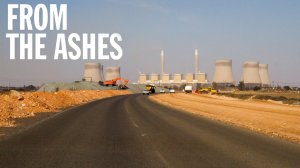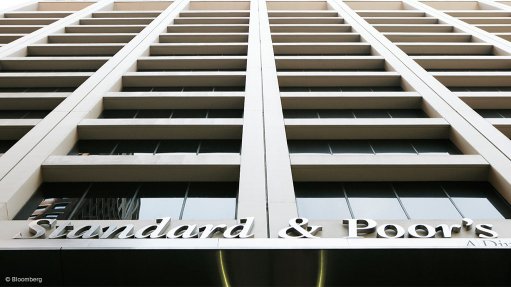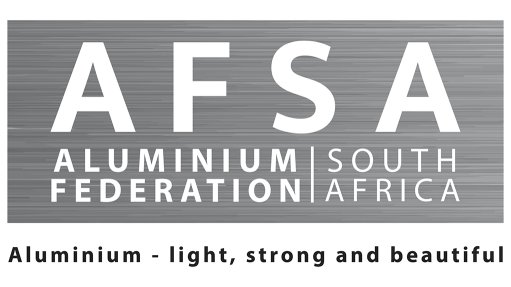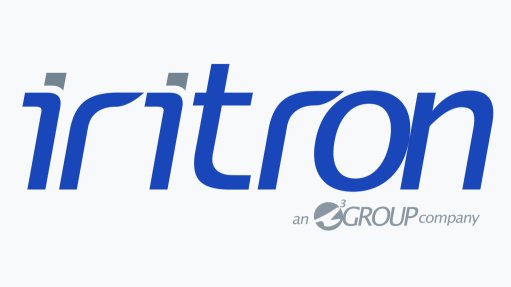Coal ash liability can be asset for multiple industries
While State-owned electricity utility Eskom produces more than 34-million tons of coal ash a year, only 7% to 10% is beneficiated, with the remaining material accumulating in dumps scattered across Gauteng, the Free State and Mpumalanga, where it poses a significant environmental threat.
The University of the Western Cape Department of Chemistry’s Professor Leslie Petrik has long worked on proving that the residue from coal combustion can be used cost effectively to treat acid mine drainage (AMD), manufacture geopolymer-based cement, roof tiles, bricks and paving stones, as well as lintels, fire-retardant panels and insulation material.
The construction industry already uses fly ash in concrete and plaster as an effective cement extender, with evidence showing that concrete containing fly ash is significantly more durable than standard cement-only concrete, owing to reduced ingress of chlorides and sulphides and the densification of the concrete matrix.
Coal combustion products, or coal ash, are solid materials produced when coal is burned to generate electricity. Although officially designated as waste, ash is considered a resource, as its various types can be used in a range of applications.
In some cases, products made with coal ash perform better than products made without it, according to the South African Coal Ash Association (Sacaa).
Eskom says the bulk of coal ash produced in its generation process comprises fly ash.
Fly ash has mechanical and chemical properties that make it a valuable ingredient in a range of concrete products, with roads, bridges and buildings often incorporating it as a cement extender.
By reducing the amount of manufactured cement needed to produce concrete, fly ash helps to lower greenhouse-gas emissions by about 12-million tons a year, Sacaa states.
Other uses for fly ash include constructing structural fills (including for rubber and plastics) and embankments, waste stabilisation and solidification, as mine reclamation and as a raw feed ingredient in cement manufacturing.
Further, bottom ash, a heavier granular material that is collected from the bottom of coal-fuelled boilers, can be used as an aggregate to replace sand and gravel. It is also an ingredient in concrete block manufacturing, a feedstock in cement production and a filler material in structural applications.
Moreover, clinker ash closely resembles stone formations and is often used in brickmaking.
Sacaa says new beneficial uses for coal ash are continually being developed, with researchers and ash marketers exploring the potential of reusing harvested ash that has already been disposed of.
There is also interest in potentially extracting strategic rare-earth minerals from ash for use in electronics manufacturing.
Sacaa adds that coal ash can also be used to rehabilitate previously mined areas for other economic uses, as well as to treat sulphate-rich mine water and AMD. In the agriculture sector, coal ash is often a more cost-effective option than conventional lime for soil amelioration.
Coal ash was used in the construction of various local projects, such as the Gautrain, the Gauteng Freeway Improvement Project and the FNB Stadium, all in Gauteng, the Coega Industrial Development Zone, in the Eastern Cape, and the Knellpoort dam, in the Free State. It was also used in the construction of the Katse dam, in Lesotho, the Lesotho Highlands Water Project (LHWP), and the Burj Khalifa hotel, in Dubai.
In the water infrastructure sector, fly ash was used extensively in the Knellpoort dam, the first roller-compacted arch-gravity dam in the world, while the LHWP used up to 40% fly ash to limit heat build-up and reduce the likelihood of cracking. For the Katse dam project, Eskom supplied 250 000 t of coal ash from the Lethabo power station.
Economic Considerations
Although classified as a hazardous waste under South Africa’s National Environmental Management Waste Act, owing to its heavy metal concentrations, Sacaa says fly ash, when managed properly, does not pose a risk to human health or the environment.
Internationally, coal ash is regarded as a raw material or by-product, not waste.
Petrik says ash often contains traces of the radioactive elements uranium and thorium, which necessitates that the ash-augmented concrete or geopolymers be used with caution in closed and confined spaces, owing to radon gas emissions.
Companies wishing to use coal ash require a waste management licence, which is very expensive and takes two years to process, creating a major obstacle for small businesses wanting to enter the industry.
However, Eskom, as the largest coal ash producer in the country, has contractually supplied ash to large cement producers from various power stations over the past 20 years.
Under waste exclusion regulations, Eskom can use coal ash for road construction and brick manufacturing, providing both economic and environmental benefits.
The utility and the Department of Forestry, Fisheries and the Environmental have established norms and standards that govern the safe management of ash throughout its life cycle.
Eskom says it sells 1.2-million tons of ash a year to the cement industry for use as a cement extending ingredient.
With coal-fired power stations running out of ash storage space and Eskom needing to improve its environmental credentials, the utility’s ash strategy aims to commercialise more of its stored ash, avoid costs linked to its handling and storage, and unlock new revenue streams.
Sacaa says coal ash can play a key role in business development, job creation, skills transfer and localisation, as “it is imperative to develop new markets that consume high volumes of ash, including road construction and agriculture, as well as land rehabilitation”.
In this regard, developing small brickmaking facilities near power stations is ideal.
Case in Point
Eskom showcased its road construction project in October at the Kusile power station, in Mpumalanga, where recycled legacy coal ash was used.
The utility built a new 759-m-long access road to support the daily passage of between 1 200 and 1 600 trucks during the construction of a new coal conveyor belt.
Eskom’s research division explored geopolymerisation, a chemical process that transforms aluminosilicate ash into geopolymer concrete, an innovative material that serves as a sustainable and durable alternative to traditional cement.
By applying this technology to the Kusile West access road, Eskom is advancing sustainable infrastructure development in South Africa.
Sacaa, Eskom and Petrik agree that ash utilisation is a sustainable business solution that contributes to the economy, resource conservation and pollution reduction.
There is, however, still much left to be done to increase coal ash beneficiation by developing more uses for the product, such as in gasification and flue-gas treatment.
International Use
India’s Ministry of Coal is actively working to ensure the repurposing of fly ash from its thermal power plants, including for mine backfilling and rehabilitation. Nineteen mines were assigned to 13 thermal power plants for collaboration on the use of fly ash in July this year.
Moreover, Australia’s Royal Melbourne Institute of Technology (RMIT) has developed a type of “green concrete” that uses twice as much recycled coal ash as existing low- carbon concretes, reduces cement usage by half and lasts longer than regular Portland cement concrete.
The institute estimates that 1.2-billion tons of coal ash a year is produced globally, with coal ash in Australia accounting for nearly 20% of all its waste.
A team from the RMIT has been working with the Ash Development Association of Australia and the Loy Yang power station to increase the use of coal ash in cement.
“There are hundreds of megatonnes of ash waste . . . in dams around Australia, and much more globally. These ash ponds risk becoming an environmental hazard, and the ability to repurpose this ash in construction materials at scale would be a massive win,” the RMIT states.
Moreover, scientists from the Krasnoyarsk Science Centre, in Russia, proposed in August this year to use coal ash microspheres to create ceramic membranes, which are used for wastewater treatment.
The primary method for removing oil products, pesticides and heavy metals from wastewater is through membranes – porous polymer compounds that retain foreign substances as water passes through them during filtration.
A cheaper alternative is the use of ceramic membranes, which can be produced from industrial waste, including ash that is formed during the combustion of fuel at coal-fired power stations.
The scientists found that, through the testing of water contaminated with microsilica particles, membrane substrates made of coal waste demonstrated an almost 100% purification efficiency.
Moreover, testwork at the Canadian Light Source (CLS), at the University of Saskatchewan, has found that rare-earth elements (REEs) can be extracted from coal ash, depending on the recovery process. While the rare earths concentration is not particularly high, it is offset by coal ash being abundant in countries with coal-fired power stations.
The concentration of rare earths throughout the ash is also fairly homogenous, as a result of which no complicated grading is required, as is the case with mined ores. Once perfected, the extraction process will also be much faster than opening new mines, which often faces delays of up to 17 years between exploration and production, the CLS states.
It adds that the recovery of REEs from coal ash is an important step towards a circular economy and reducing environmental liabilities. It is also crucial to unlock more sources of rare earths as the world demands more.
Since most of the world’s ash is stored in landfills or tailings facilities near power plants, stakeholders agree that its use should be enabled and encouraged.
Article Enquiry
Email Article
Save Article
Feedback
To advertise email advertising@creamermedia.co.za or click here
Comments
Press Office
Announcements
What's On
Subscribe to improve your user experience...
Option 1 (equivalent of R125 a month):
Receive a weekly copy of Creamer Media's Engineering News & Mining Weekly magazine
(print copy for those in South Africa and e-magazine for those outside of South Africa)
Receive daily email newsletters
Access to full search results
Access archive of magazine back copies
Access to Projects in Progress
Access to ONE Research Report of your choice in PDF format
Option 2 (equivalent of R375 a month):
All benefits from Option 1
PLUS
Access to Creamer Media's Research Channel Africa for ALL Research Reports, in PDF format, on various industrial and mining sectors
including Electricity; Water; Energy Transition; Hydrogen; Roads, Rail and Ports; Coal; Gold; Platinum; Battery Metals; etc.
Already a subscriber?
Forgotten your password?
Receive weekly copy of Creamer Media's Engineering News & Mining Weekly magazine (print copy for those in South Africa and e-magazine for those outside of South Africa)
➕
Recieve daily email newsletters
➕
Access to full search results
➕
Access archive of magazine back copies
➕
Access to Projects in Progress
➕
Access to ONE Research Report of your choice in PDF format
RESEARCH CHANNEL AFRICA
R4500 (equivalent of R375 a month)
SUBSCRIBEAll benefits from Option 1
➕
Access to Creamer Media's Research Channel Africa for ALL Research Reports on various industrial and mining sectors, in PDF format, including on:
Electricity
➕
Water
➕
Energy Transition
➕
Hydrogen
➕
Roads, Rail and Ports
➕
Coal
➕
Gold
➕
Platinum
➕
Battery Metals
➕
etc.
Receive all benefits from Option 1 or Option 2 delivered to numerous people at your company
➕
Multiple User names and Passwords for simultaneous log-ins
➕
Intranet integration access to all in your organisation





















